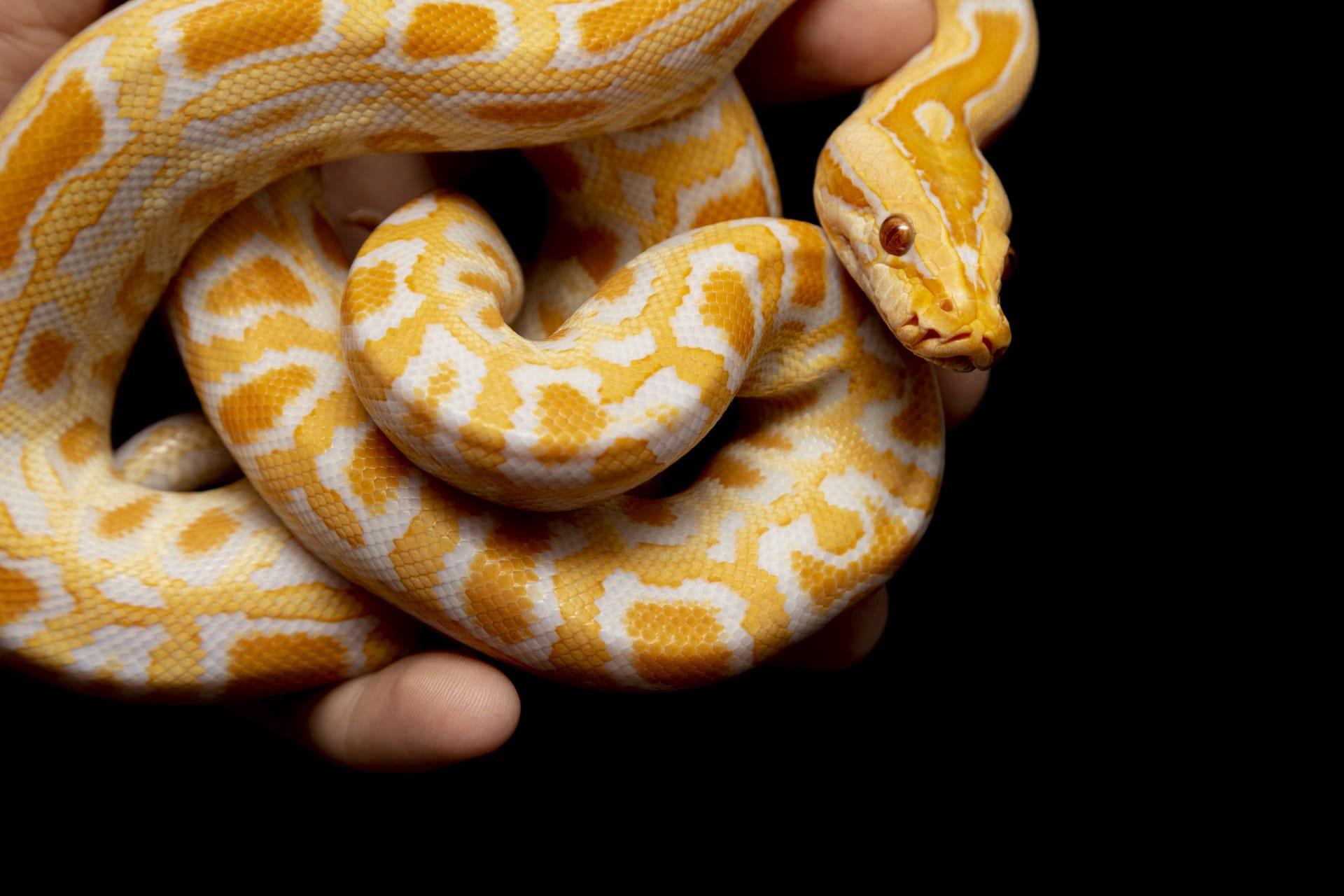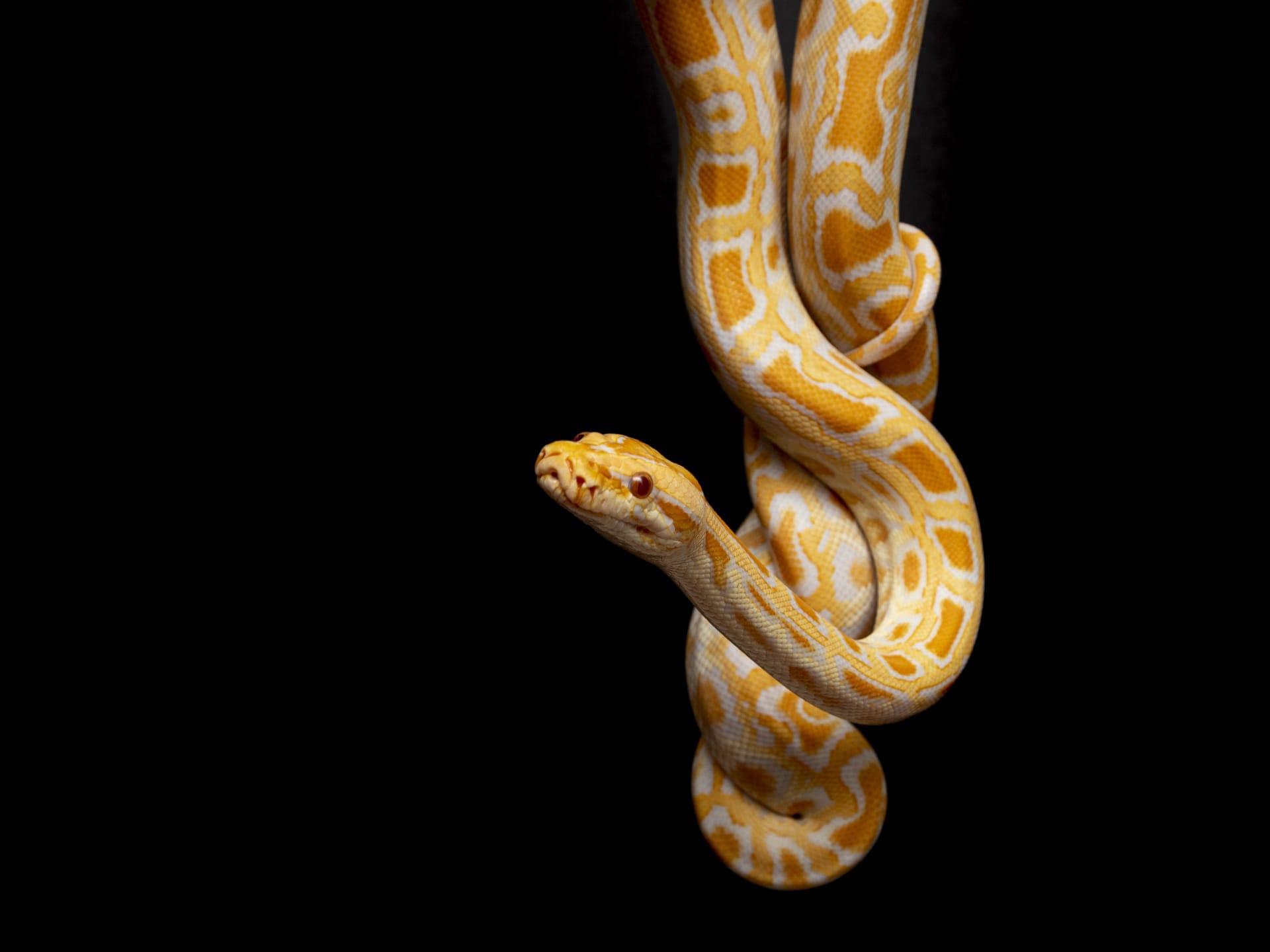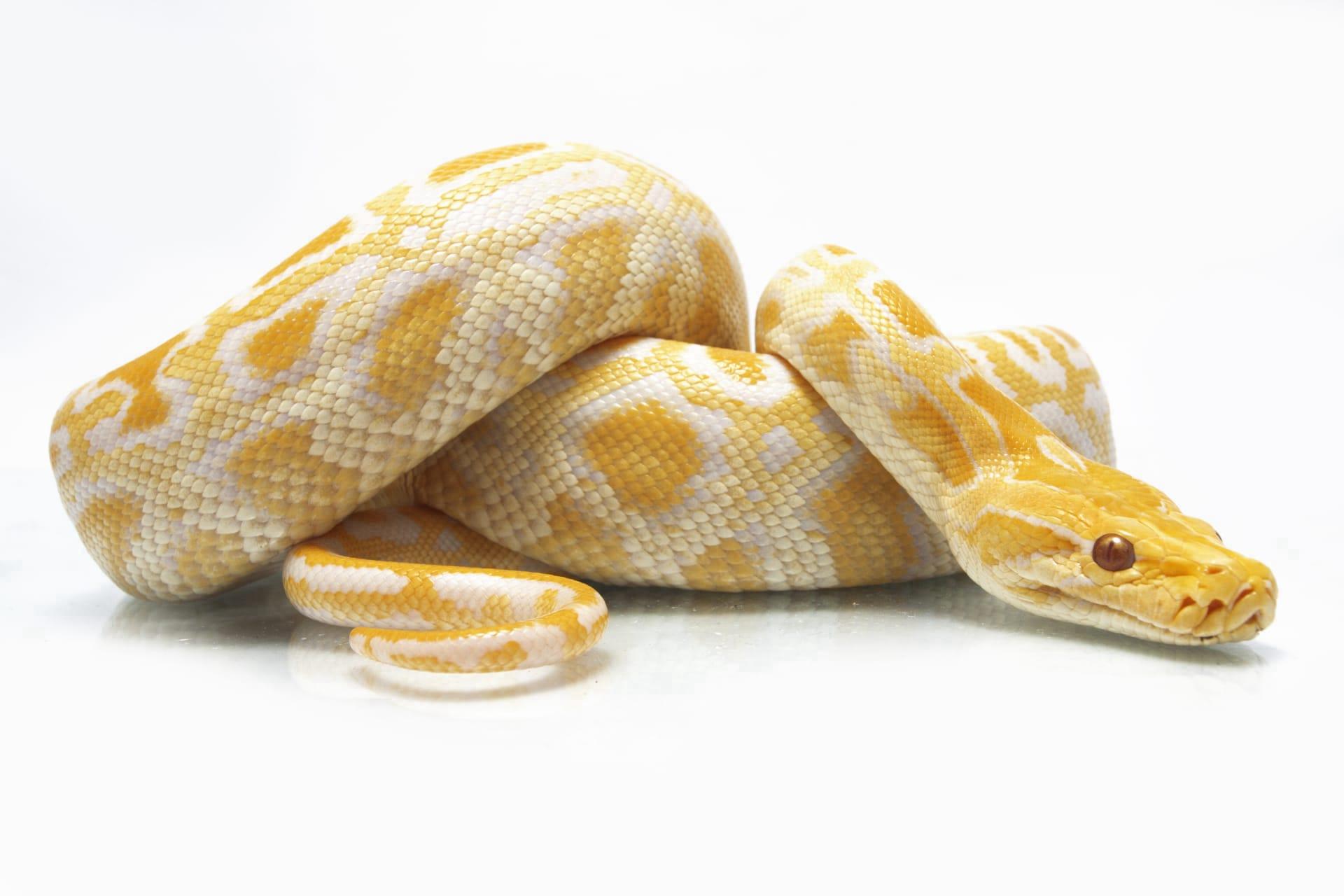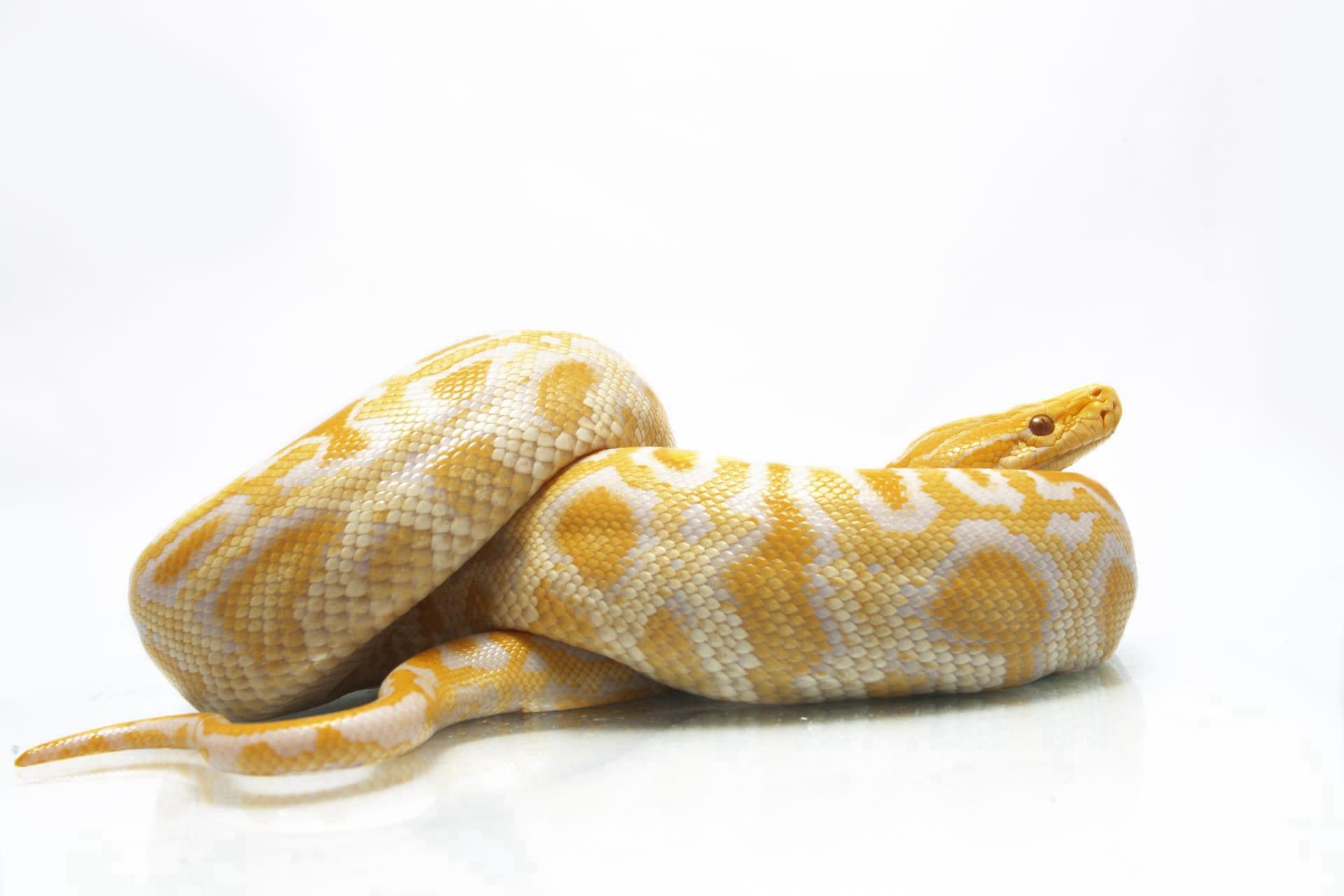Ball Python Snake
- Home /
- Mini Encyclopedia /
- Animal /
- Ball Python Snake
1
The Ball Python, scientifically named Python regius, belongs to the Pythonidae family. This species is known for its relatively small size compared to other pythons, typically reaching a length of 3 to 5 feet. Its scientific classification places it within the order Squamata, suborder Serpentes, indicating it's a true snake. Ball Pythons are distinguished by their smooth scales and unique patterns, which often consist of rich browns, blacks, and golds, creating intricate and varied designs across their bodies.
Native to sub-Saharan Africa, Ball Pythons are predominantly found in the grasslands and open forests of West and Central Africa. Their distribution extends from Senegal in the west, through countries like Mali, Guinea, Sierra Leone, and as far east as the Central African Republic and Uganda. These snakes prefer a warm, tropical climate with a temperature range between 78 to 96 degrees Fahrenheit. Ball Pythons are known for their adaptability to different microenvironments within this range, often seeking shelter in burrows, termite mounds, or tree branches.

2
Question: Do Ball Pythons kill and eat large animals?
Answer: A common misconception about Ball Pythons is their diet and hunting capabilities. In reality, Ball Pythons, due to their size, primarily prey on small to medium-sized mammals and birds. Their diet typically includes rodents like mice and rats, and sometimes small birds. They use constriction to subdue their prey – a method where they coil around the animal and tighten their grip to cause suffocation. Ball Pythons lack the size and strength to hunt large animals, making such feats beyond their capabilities.

3
Ball Pythons have evolved several strategies for survival. One of their most notable tactics is their ability to coil into a tight ball when threatened, hence their name. This defensive posture protects their vulnerable head and neck by tucking them in the center of the coil. This behavior is more prominent in younger snakes and serves as a primary defense mechanism against predators.
Camouflage is another key survival strategy for the Ball Python. Their patterned skin blends seamlessly with the forest floor and foliage, making them difficult to spot. This natural camouflage not only aids in avoiding predators but also in ambushing prey. Ball Pythons are ambush predators, meaning they wait patiently and motionlessly for unsuspecting prey to come within striking distance before launching a rapid attack.

4
In their natural ecosystem, Ball Pythons play a crucial role in controlling the population of small mammals, particularly rodents. By preying on these animals, they help maintain a balanced ecosystem, preventing overpopulation of these species which could lead to crop damage and spread of diseases.
Ball Pythons also serve as prey for larger animals, thereby contributing to the food chain. Predators such as large birds of prey, hyenas, and leopards feed on these snakes. This predatory relationship helps maintain the balance of predator and prey populations in their natural habitat, ensuring a healthy and functioning ecosystem.

5
Film: "The Secret Life of Snakes" is a documentary produced in the United States in 2018. It explores the fascinating world of snakes, including an in-depth segment on Ball Pythons. The film delves into their natural behaviors, habitat, and the challenges they face in the wild, offering viewers a close-up view of these remarkable creatures.
Book: "Ball Python Care: The Ultimate Guide to Keeping and Breeding", published in the USA in 2020 by author James Hathaway, provides a comprehensive overview of caring for Ball Pythons. The book covers topics like habitat setup, feeding, health concerns, and breeding techniques, making it a valuable resource for both novice and experienced snake enthusiasts.
Book: "Ball Pythons in the Wild: Observations and Conservation", authored by British herpetologist Sarah Jenkins in 2022, focuses on the natural behavior and conservation of Ball Pythons. The book offers insights into their life in the wild, the ecological challenges they face, and efforts to conserve their habitats, providing readers with a deeper understanding of these snakes in their natural environment.